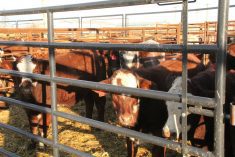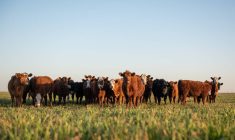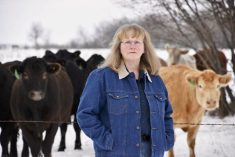The number of U. S. cattle being fattened in feedlots is the smallest in four years as losses on cattle sales have prompted producers to reduce supplies, analysts said March 19.
The U. S. Agriculture Department reported there were 11.228 million cattle in U. S. feedlots as of March 1, which was 95 per cent of a year ago, and the smallest supply for that date since 2005.
However, it is unlikely the smaller supply will mean significantly higher cattle prices. Weak demand for beef during these recessionary times should keep a lid on what beef plants pay for cattle, analysts said.
Read Also

Smart deworming for sheep starts with individual fecal egg counts
Fecal egg count tests are one step to managing dewormer resistance and managing sheep parasites on Canadian sheep farms to maintain flock health.
“I think we are locked into an $80 to $84 range for the next two to three months,” Rich Nelson, analyst at Allendale Inc., said of cattle prices.
On March 19, cattle traded in the key markets of Texas, Oklahoma, and Kansas at mostly $83 per cwt, which was up $2 from a week earlier.
Cattle prices could reach $85 or more in April if beef sales improve for spr ing cookouts and barbecues, said Jim Robb, economist at the Livestock Marketing Information Center.
Because analysts expected the smaller cattle supply, they do not anticipate much reaction to the report on Monday at the Chicago Mercantile Exchange cattle futures market.
“There is nothing too far from expectations,” Dennis Smith, livestock broker with Archer Financial, said of the data.
USDA put February placements at 97 per cent of a year ago, or 1.678 million head. Analysts, on average, expected placements at 100.3 per cent. USDA also reported February marketings at 95 per cent of a year ago, or 1.682 million head, versus the analysts’ average of 94.4 per cent.
While a smaller supply would normally mean higher cattle prices, poor beef demand has limited the upside potential.
“The demand issues and also bigger cattle weights have made up for the smaller supply,” said LMIC’s Robb.
Cattle being slaughtered weigh more than a year ago, which means more beef per animal. For example, USDA estimated the number of cattle slaughtered the week ending Mar. 19 was down 4.5 per cent from a year ago, while beef production was down 2.1 per cent.
The average weight of those cattle was 1,315 lbs., compared with 1,276 a year ago, USDA said.
Nelson and Robb attributed the larger weights to cattle being heavier when they came into feedlots, to ideal growing weather during the winter, and to periods of slow cattle sales this winter.


















